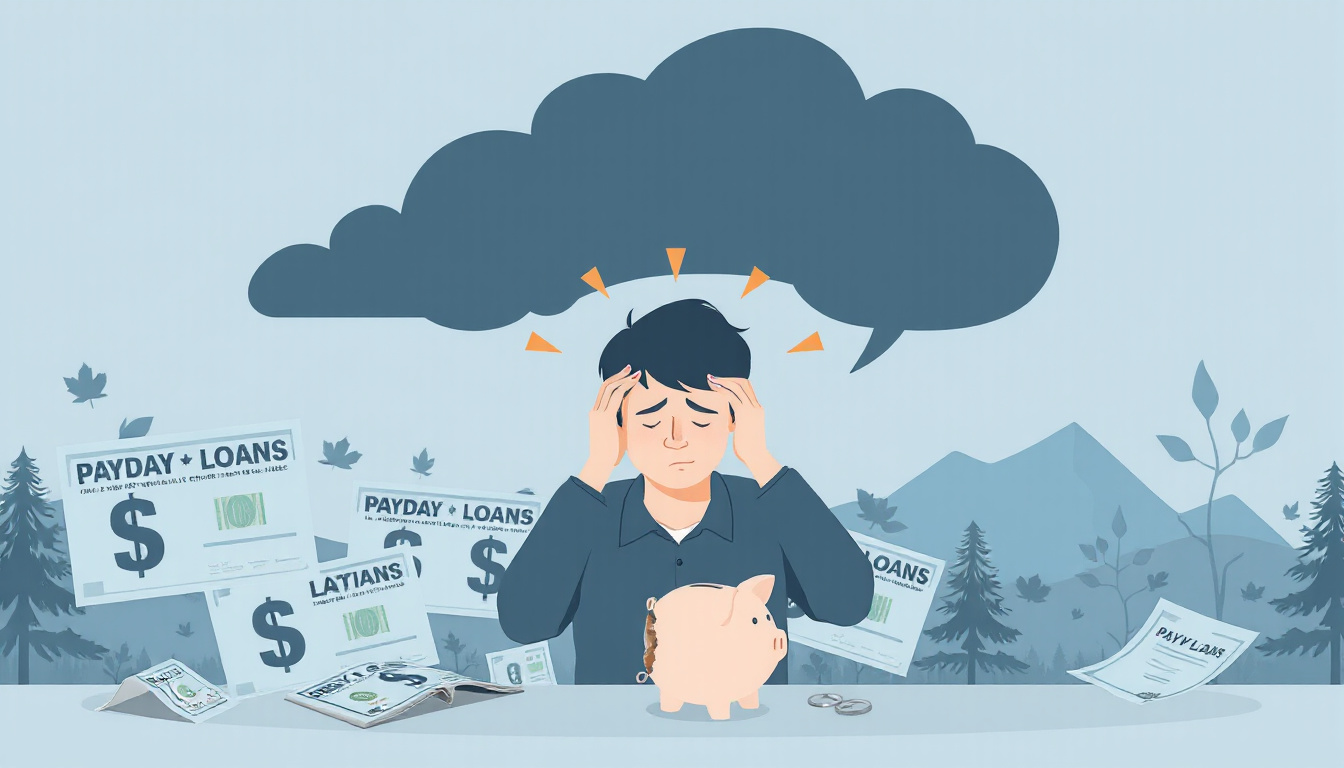In Canada, approximately
1.8 million adults rely on payday loans each year, according to a 2023 report by the Canadian Centre for Policy Alternatives. This startling number highlights a growing trend among Canadians facing financial hardships. As many as 44% of payday loan borrowers reported using these loans to cover essential expenses such as rent, utilities, and food. Despite the immediate relief these loans may provide, they often come with exorbitant interest rates that can trap borrowers in a cycle of debt. Understanding the number of Canadians using payday loans and the critical factors behind their increasing reliance on this form of credit is essential for anyone looking to navigate the complexities of personal finance in Canada. In this article, we will delve into the statistics, risks, and alternatives to payday loans, providing a comprehensive overview of this pressing issue.

Key Takeaways
- Payday loans are becoming increasingly popular among Canadians, indicating a growing dependence on short-term credit.
- Recent statistics reveal a significant rise in the number of Canadians turning to payday loans for financial relief.
- The risks associated with payday loans include high-interest rates and potential debt cycles that can trap borrowers.
- Many Canadians are unaware of the long-term consequences of relying on payday loans for immediate financial needs.
- There are viable alternatives to payday loans, such as credit unions and community lending programs, that can offer support without the pitfalls.
Understanding the Rise of Payday Loans in Canada
As of 2023, approximately
1.5 million Canadians used payday loans in the past year, highlighting a growing trend in short-term borrowing among households facing financial constraints. This figure represents a significant increase from previous years, with more Canadians turning to payday loans as a quick solution to immediate cash needs. According to the Canadian Payroll Association, nearly 43% of Canadians live paycheck to paycheck, making payday loans an attractive option despite their notoriously high-interest rates. The rise in payday loan usage underscores ongoing challenges within the Canadian economy, particularly for low to middle-income households that struggle to cover unanticipated expenses. Understanding this trend provides insight into consumer behavior and the broader implications for debt relief services across the country. For more detailed statistics and reports, refer to the Financial Consumer Agency of Canada (FCAC), which continues to monitor trends in consumer borrowing.
Statistics Behind the Increasing Use of Payday Loans
As of 2023, approximately
1.9 million Canadians have turned to payday loans at least once in their lives, highlighting a growing reliance on these short-term borrowing options. This statistic underscores the increasing financial strain many Canadians face, with numerous individuals resorting to payday loans to meet unexpected expenses or financial emergencies. According to a 2022 report by the Canadian Consumer Financial Services Association, the average payday loan is around $300, and over half of borrowers utilize these loans to cover basic living expenses such as rent, groceries, and utilities. This rising trend prompts concerns regarding the debt cycle and potential long-term financial implications for individuals. As the affordability crisis continues, these figures highlight a crucial area for policy discussion and consumer education on alternative financial solutions.
‘The things you own end up owning you.’ – Chuck Palahniuk

The Risks and Consequences of Payday Loan Dependency
As of 2022, approximately
1.5 million Canadians were reported to be using payday loans, a statistic that underscores the growing reliance on high-cost borrowing among Canadians facing financial difficulties. This trend has raised significant concerns among financial experts and policymakers who warn about the severe implications of payday loan dependency, including spiraling debt cycles and financial instability for vulnerable populations. According to a report from the Canadian Consumer Financial Protection Agency, nearly 40% of payday loan users find themselves trapped in a cycle of debt, unable to repay their loans without taking out additional loans. The ease of access to payday loans has contributed to this trend; in many cases, individuals turn to these short-term solutions in emergencies, unaware of the long-term financial consequences. Such reliance on payday loans highlights the urgent need for accessible financial education and more sustainable lending alternatives in Canada.
Alternatives to Payday Loans for Canadians
As of 2023, approximately
2.3 million Canadians utilize payday loans, which represent a significant trend in short-term borrowing across the nation. According to a report by the Canadian Consumer Financial Protection Agency, this number reflects a growing reliance on high-interest loans, often due to financial emergencies or unexpected expenses. Despite the accessibility of payday loans, many Canadians are becoming increasingly aware of the potential pitfalls, leading to a search for more sustainable alternatives. Options such as credit unions, peer-to-peer lending, and personal loans from traditional banks can provide more favorable terms and lower interest rates, making them viable substitutes for those looking to avoid the cycle of debt that payday loans can provoke. By understanding their choices, Canadians can make informed decisions to better manage their financial situations without falling into the trap of high-cost borrowing.
